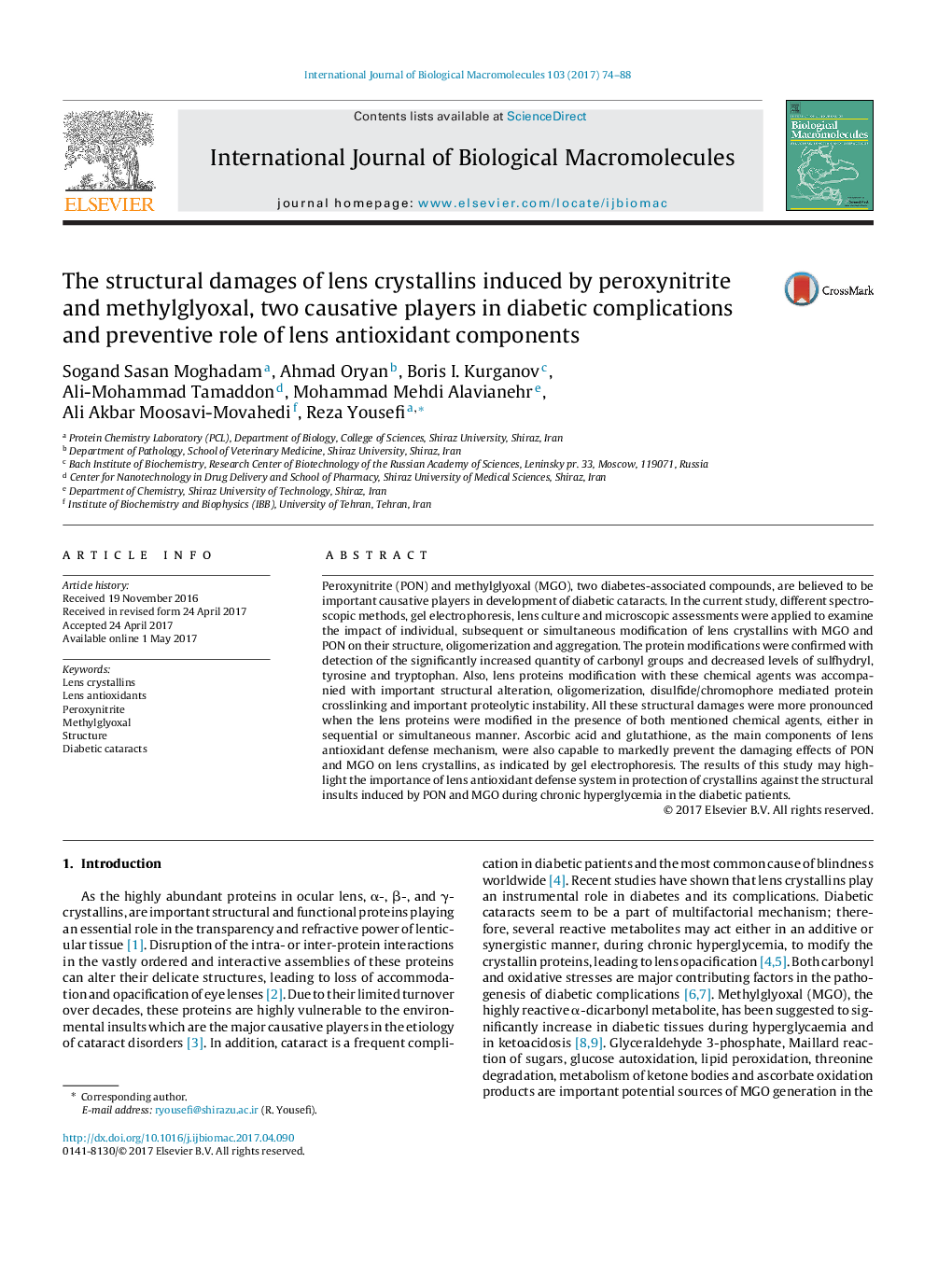| کد مقاله | کد نشریه | سال انتشار | مقاله انگلیسی | نسخه تمام متن |
|---|---|---|---|---|
| 5511830 | 1540215 | 2017 | 15 صفحه PDF | دانلود رایگان |
- Peroxynitrite and methylglyoxal are diabetes-associated and highly reactive metabolites.
- The subsequent and simultaneous modifications of lens crystallins were carried out with these compounds.
- Modifications of lens proteins were accompanied with the important structural damages.
- Ascorbic acid and glutathione were also capable to markedly reverse these damages.
- Lens antioxidant defense system protects crystallins against damaging effects of peroxynitrite and methylglyoxal.
Peroxynitrite (PON) and methylglyoxal (MGO), two diabetes-associated compounds, are believed to be important causative players in development of diabetic cataracts. In the current study, different spectroscopic methods, gel electrophoresis, lens culture and microscopic assessments were applied to examine the impact of individual, subsequent or simultaneous modification of lens crystallins with MGO and PON on their structure, oligomerization and aggregation. The protein modifications were confirmed with detection of the significantly increased quantity of carbonyl groups and decreased levels of sulfhydryl, tyrosine and tryptophan. Also, lens proteins modification with these chemical agents was accompanied with important structural alteration, oligomerization, disulfide/chromophore mediated protein crosslinking and important proteolytic instability. All these structural damages were more pronounced when the lens proteins were modified in the presence of both mentioned chemical agents, either in sequential or simultaneous manner. Ascorbic acid and glutathione, as the main components of lens antioxidant defense mechanism, were also capable to markedly prevent the damaging effects of PON and MGO on lens crystallins, as indicated by gel electrophoresis. The results of this study may highlight the importance of lens antioxidant defense system in protection of crystallins against the structural insults induced by PON and MGO during chronic hyperglycemia in the diabetic patients.
104
Journal: International Journal of Biological Macromolecules - Volume 103, October 2017, Pages 74-88
